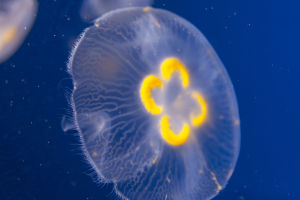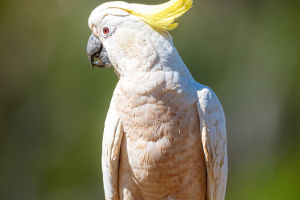The polar bear, also known as the white bear, is the largest carnivorous animal on land with a body length of up to 2.8 meters and a thick fur coat that is entirely white. Its weight can exceed 900 kilograms, but mature males usually weigh between 386-410 kilograms.
Polar bears are only found in the Arctic Circle and are precious animals due to their beautiful, soft, smooth, and insulating fur. In the Middle Ages, Europeans considered the fur of polar bears and the ivory of walruses as treasures and important export goods from Greenland.
Polar bears roam the frozen regions of the Earth like wanderers, with their territory stretching from Siberia to Alaska, Canada, Greenland, and the northern islands of Norway. Some Eskimo people have even revered this giant carnivore as an intelligent spirit.
Polar bears often dig holes in snowdrifts near the ocean to make nests. The bear den is a simple oval shape, and a snow wall is built near the entrance to block wind. The bear den has two purposes: one is for female bears to give birth, and the other is for hibernation.
Usually, polar bears mate in early spring, and in autumn, the female bear enters the snow den to give birth from mid-November to mid-December. The temperature inside the bear den is generally above 0 degrees Celsius because the cold air outside is blocked by the snow door.
Female bears' strong bodies emit heat that makes the bear den warmer, and after giving birth, they spend the winter half-awake. They only leave the den before April of the next year, and each litter usually brings forth two cubs, which are only as big as mice at birth.
Their hair is sparse, so they cuddle up in their mother's arms for warmth. After three days of birth, the cubs need 4-5 years to mature, and polar bears live for about 30 years.
In general, male polar bears and non-pregnant female do not hibernate or hibernate for a short time. They travel around, endure the harsh winter, but most polar bears in the coldest areas of the Arctic hibernate.
So why do some polar bears hibernate and others don't? According to new field research, scientists believe that hibernation is related to food. When food is abundant, polar bears do not hibernate. When food is scarce, polar bears hibernate.
Hibernation is not only to resist the cold winter but also to overcome the difficult situation of severe food shortages. This is an animal instinct to adapt to objective conditions. Polar bear hibernation is a semi-hibernation state when it crawls into the snow den after eating enough in autumn.
Their body temperature does not decrease, and their metabolism does not decrease either. They only reduce energy consumption to survive the harsh winter when food is hard to find.
Polar bears generally prefer seals as their favorite food, but they also prey on fish. However, before hibernating, they almost exclusively catch seals because their fat is rich, and the energy intake is enough to help polar bears survive the cold winter.
Interestingly, polar bears are often considered white by most people, but scientists point out that their white color is not protective. Scientists say infrared cameras used to photograph wildlife are not suitable for polar bears.
This animal cannot be photographed on infrared film because their body temperature is as cold as the surrounding polar ice and snow. As for ultraviolet photography, the white polar bear appears much darker than white snow.
Although the polar bear's white fur is highly reflective, for some unknown reason, its white color absorbs most of the sun's ultraviolet rays that shine on it. Scientists have studied this wonderful phenomenon closely.
They analyzed the white fur of polar bears using an electron microscope and were amazed to find that the bear's fur is not white. Rather, it consists of many hollow and transparent tubes. The white seen by humans is due to the rough surface of the hair refracting light into a disorderly pattern, forming white.
This white color appears only under ultraviolet light and is a tool for polar bears to collect heat and provides camouflage while hunting. This raises a question for humans: Can we learn something from polar bears' white color to create warm clothing? This requires further research by scientists.


